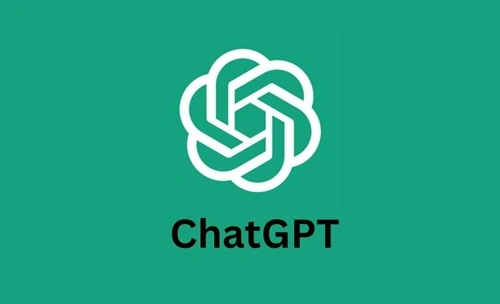ChatGPT, developed by OpenAI, is a state-of-the-art conversational AI model that has redefined human-computer interaction. Launched as a research project, it has quickly evolved into a commercial product due to its versatility and ability to assist in diverse applications, such as customer service, content creation, coding, and learning. With its powerful capabilities and widespread adoption, ChatGPT has become a key player in the growing AI-driven technology market.
This article explores ChatGPT’s business model, revenue streams, and strategies that make it one of the leading platforms in conversational AI.
Overview of ChatGPT’s Business Model

ChatGPT operates on a B2C (Business-to-Consumer) and B2B (Business-to-Business) model. It serves individual users, enterprises, developers, and institutions by offering access to its AI capabilities for various use cases. OpenAI has developed a monetization strategy focused on tiered subscription plans, API integrations, and partnerships.
Key Features of ChatGPT’s Business Model:
- Freemium Model:
- A free tier offers access to basic ChatGPT capabilities, allowing users to experience the product before upgrading to premium features.
- Subscription-Based Revenue:
- Paid plans, such as ChatGPT Plus, provide enhanced features like faster response times and access to advanced versions of the model.
- API Monetization:
- Businesses and developers integrate ChatGPT into their own applications through APIs, paying usage-based fees.
- Custom Solutions for Enterprises:
- Tailored implementations for large-scale business needs, such as customer support automation and content generation.
- Partnerships and Licensing:
- Collaborations with enterprises to co-develop AI-powered solutions and tools.
How Does ChatGPT Earn Money?
ChatGPT generates revenue through multiple streams by catering to both individual users and businesses. Here’s how it earns money:
a. ChatGPT Plus Subscription
- Core Revenue Driver:
- ChatGPT offers a premium subscription plan called ChatGPT Plus, priced at $20 per month. It provides:
- Priority access during peak times.
- Faster response speeds.
- Access to the latest AI models, such as GPT-4.
- This subscription is particularly attractive to heavy users, such as content creators, students, and professionals.
- ChatGPT offers a premium subscription plan called ChatGPT Plus, priced at $20 per month. It provides:
b. API Usage Fees
- Businesses and developers can integrate ChatGPT into their own platforms via OpenAI’s API. Pricing is based on the number of tokens (words) processed during interactions.
- API customers include companies building chatbots, virtual assistants, and automation tools.
- Pricing tiers allow scalability, catering to small startups and large enterprises alike.
c. Enterprise Solutions
- OpenAI provides tailored enterprise solutions, generating revenue through:
- Custom deployments of ChatGPT for specific business needs.
- Large-scale contracts with organizations for use in customer service, marketing automation, and employee support.
- Data security and compliance features for industries like healthcare and finance.
d. Licensing Agreements
- ChatGPT earns money by licensing its underlying technology to partners, enabling them to integrate AI-powered solutions into their platforms.
- Examples include partnerships with tech giants and SaaS companies for embedding GPT-powered functionality.
e. Developer Ecosystem
- OpenAI offers tools and resources for developers to build custom applications using ChatGPT, generating revenue through:
- Fees for API usage.
- Paid developer support and premium integration services.
f. Educational and Research Partnerships
- ChatGPT is widely used in education and research. OpenAI collaborates with institutions to offer subscription packages for educational purposes, earning revenue while fostering AI literacy.
g. Usage-Based Pricing for Enterprises
- Enterprise clients pay based on the scale of their usage, including the volume of API requests, token limits, and the level of customization required.
h. Plugins and Integrations
- ChatGPT recently introduced plugin support, allowing users to integrate third-party tools directly within the platform. Revenue is generated through:
- Developer fees for hosting plugins on the platform.
- Subscription plans that grant access to exclusive plugins.
i. Cloud Partnerships
- OpenAI collaborates with cloud providers like Microsoft Azure, leveraging their infrastructure to scale operations. Revenue is shared from enterprise-level solutions powered by ChatGPT.
j. Data and Insights
- While OpenAI emphasizes privacy, aggregated and anonymized insights may be offered to businesses for improving user experience and operations, generating additional revenue.
Why ChatGPT’s Model Works
ChatGPT’s business model succeeds because it combines accessibility, innovation, and versatility to meet the needs of a diverse user base. Here’s why it works:
a. Freemium Model for Customer Acquisition
- The free tier attracts a broad audience, many of whom convert to paying customers once they see the value of advanced features.
b. Scalability
- The platform is designed to cater to individual users, startups, and enterprises, ensuring revenue diversity and reducing dependency on any single customer segment.
c. Versatility
- ChatGPT supports a wide range of applications, including customer service, coding, education, and content creation, making it a must-have tool for many industries.
d. Technology Leadership
- OpenAI’s consistent innovation (e.g., GPT-4) ensures that the platform remains competitive and appealing to users seeking state-of-the-art solutions.
e. Developer Ecosystem
- By enabling developers to build on its platform, OpenAI creates a multiplier effect, expanding use cases and driving API adoption.
Financial Performance
ChatGPT has quickly become one of OpenAI’s key revenue drivers. As of 2024:
Revenue Growth
- OpenAI is projected to generate over $1 billion in annual revenue, driven largely by ChatGPT subscriptions and API usage.
User Base
- ChatGPT serves over 100 million active users globally, with a significant portion subscribing to ChatGPT Plus or using APIs for business applications.
Valuation
- OpenAI’s valuation has surpassed $29 billion, reflecting the success of ChatGPT and its growing adoption across industries.
Challenges and Opportunities
Challenges
- High Operational Costs:
- Running advanced AI models like GPT-4 requires significant computational power, leading to high costs.
- Competition:
- Competitors like Google’s Bard, Microsoft’s Copilot, and startups in the conversational AI space pose challenges.
- Data Privacy Concerns:
- Ensuring compliance with privacy regulations and maintaining user trust is critical for sustained growth.
Opportunities
- Enterprise Expansion:
- Growing partnerships with large enterprises and offering more tailored solutions can drive revenue growth.
- Localization:
- Expanding support for regional languages can unlock new markets, particularly in non-English-speaking countries.
- Education Sector:
- Increasing adoption in schools, universities, and online learning platforms offers a vast, untapped opportunity.
Future Prospects
ChatGPT’s growth trajectory is fueled by OpenAI’s focus on innovation, scalability, and user-centric features. Key focus areas include:
- Expanding plugin ecosystems to enable broader integrations with third-party tools.
- Enhancing enterprise offerings with advanced customization and security features.
- Investing in language and cultural localization to expand its global footprint.
- Optimizing costs through partnerships with cloud providers and developing more efficient AI models.
Conclusion
ChatGPT’s business model exemplifies how cutting-edge AI can be monetized effectively in both consumer and enterprise markets. By offering scalable solutions, leveraging a freemium strategy, and building a developer-friendly ecosystem, ChatGPT has positioned itself as a leader in conversational AI. With its commitment to innovation and strategic partnerships, ChatGPT is poised to continue driving growth and shaping the future of AI-driven solutions across industries.

